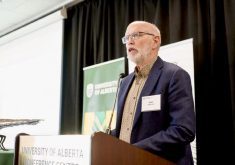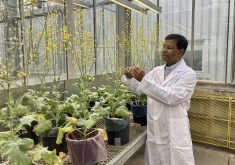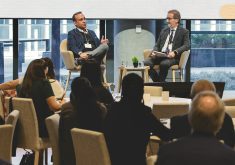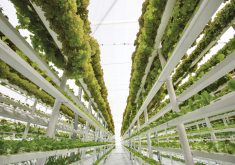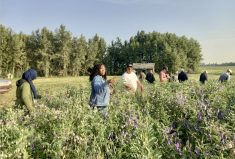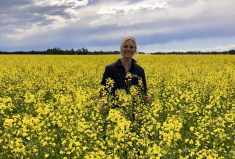What does the future of food look like?
An eclectic panel of experts offered very different answers to that question at a recent forum hosted by the University of Alberta.
How we grow food and even what we eat is probably going to change, but the solutions to today’s problems will require creative thinking and money, said Alison Sunstrum, a venture capitalist and a pioneer in using ag data.
Read Also

Moo translator and methane measures: There’s an app for that
Dalhousie University researchers use artificial intelligence to create new dairy farm apps that analyze cattle sounds and measure methane.
“It takes policy, it takes commitment and it also takes financing,” said Sunstrum, who co-founded one of the first companies to use RFID tags to measure feed efficiency in livestock.
“It also takes us as consumers demanding safe food and less waste. But I think it takes a community to drive the change that we need to see.”
That has been the impetus behind cellular agriculture, also known as ‘cultured meat,’ said Isha Datar, an Edmonton native who is a pioneer in the field and heads a non-profit institute that funds research into the technology.
“It is very real,” said Datar. “This field has grown to literally millions of dollars in investment. Hundreds of companies from around the world believe that growing food from cells is a really important part of our food strategy in a climate change world.”
Learning how to produce more food in different ways will drive change, she said.
“Growing meat from cells is one of those ways, but it’s not just meat. Even more real than meat from cells are things like dairy products or egg protein or other food types that would traditionally come from animals that can be grown by different cell types.”
[RELATED] Manitoba Co-operator: The high-tech future of meat is just around the corner
Consumers might also see unexpected foods or those from unexpected places, said U of A professor William Shotyk, a soil scientist who runs a high-tech lab for studying “trace metals cycling” in soil, water, air and plants.
Part of his work involves looking at traditional Indigenous diets. During a study in the lower Athabasca watershed, he found that wild berries are vitamin-rich and also contain surprisingly high levels of minerals.
“It was absolutely fascinating,” he said. “The berries are just full of essential micronutrients like manganese, iron, copper and nickel. What’s even more remarkable scientifically is (the soils they came from) are the most copper-deficient soils on the planet.
“So how do they get their copper? All of the berries that we’ve analyzed – cranberries, blueberries – they all have about the same amount of copper. So the planet must have a way of regulating copper uptake.”
Shotyk has also analyzed beaver meat.
“The micronutrients required for human health include chromium, nickel, copper, zinc, iron and manganese. The beaver was rich in all of them,” he said. “Barbecued beaver loins turned out to be the most delicious meat I’ve ever had.”
However, beef production is a key part of global food security and while methane emissions must be addressed, cattle are vital to grassland preservation, said Gleise Medeiros da Silva, a beef nutrition expert and assistant professor at U of A.
[RELATED] Sustainable Beef: A tale of two different numbers
Cattle production is under threat because of extreme weather such as last year’s drought, said Silva, who last year was awarded a chair position funded by a $3 million grant from the Beef Cattle Research Council and the Hays family.
“We need to find solutions to fight climate change,” she said. “We can’t just think about the future but also the present. We are already facing some of these consequences.”
Panellists also praised what has been accomplished in food production.
“From 1960 until now we produced double the food,” said Sunstrum. “What we did was amazing and it was science-driven.”
However, global agriculture has had “an incredible impact on the planet” and demands a different approach, she said. That will require both creative disruption and the innovation that comes from cross-discipline collaboration.
“We need every biologist, every geneticist, every soil scientist, every beaver scientist – everybody that we can possibly deploy to solve our problems,” she said.
But again, money is key and several panelists said that tried-and-true sources of research funding, notably from government, won’t be enough to tackle the needs of a changing agricultural world.
“Just knocking on the door of the federal government isn’t the answer,” said Shotyk. “We have been knocking at the door for a long time and those on the other side of the door just haven’t heard.”




